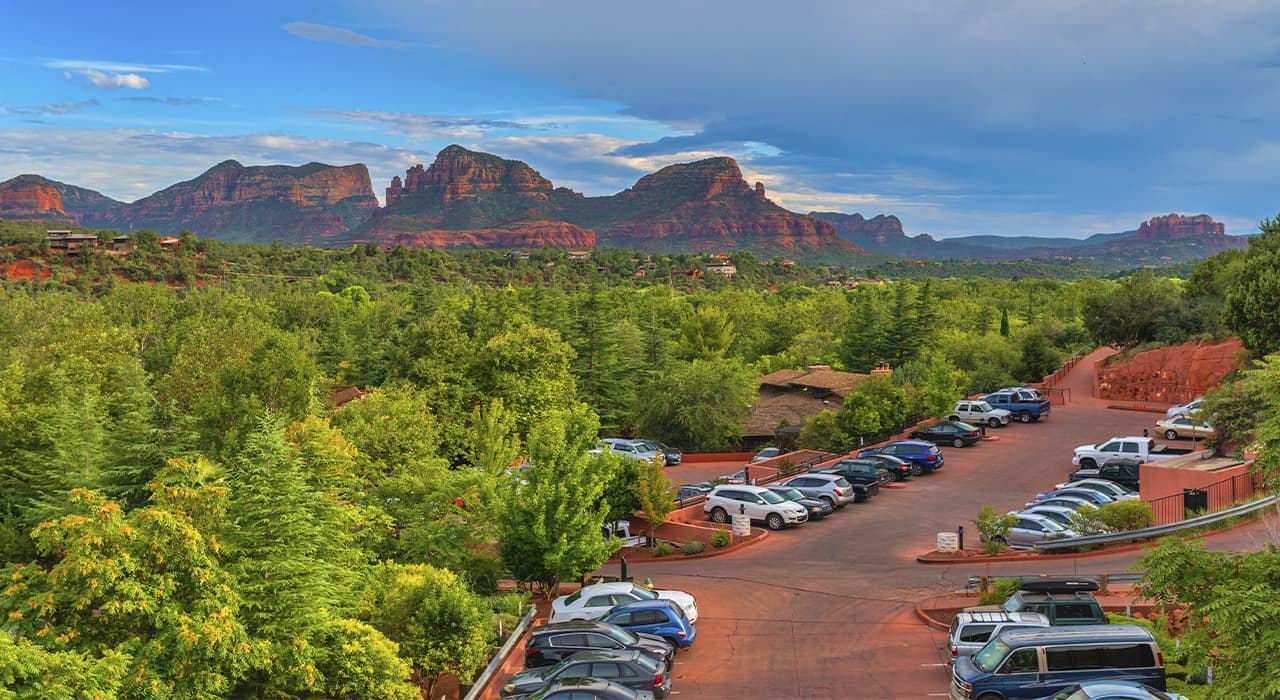Tempe is a city in Maricopa County, Arizona, USA, where the Census Bureau reports a population of 180,587 in 2020. The city is named after the Tempe Valley in Greece. Tempe is located in the East Valley region of metropolitan Phoenix; it is bordered by Phoenix and Guadalupe to the west, Scottsdale and the Salt River Pima-Maricopa Indian Community to the north, Chandler to the south and Mesa to the east. Tempe is also home to the main campus of Arizona State University.
The Hohokam lived in the area and built canals to support their agriculture. They left their settlements in the 15th century and a few individuals and families stayed nearby.
Fort McDowell was established about 25 miles (40 km) northeast of the current centre of Tempe in the upper Salt River in 1865, allowing new towns to be built further up the Salt River. US servicemen and Hispanic labourers were hired to grow food and animal feed to supply the fort, and in less than a year they set up small camps by the river, which became the first permanent settlements in the Valley after the fall of Hohokam. (Phoenix was settled shortly thereafter, by 1867-1868.) Two settlements were “Hayden’s Ferry”, named after the ferry service operated by Charles T. Hayden, and “San Pablo”, and were located to the west and east of Hayden Butte respectively. . Ferry became a key river crossing in the area. The Tempe Irrigating Canal Company was soon founded by William Kirkland and James McKinney to provide water for alfalfa, wheat, barley, oats and cotton.
Pioneer Darrell Duppa suggested the name Tempe, adopted in 1879, after comparing the Salt River Valley near the 300 ft (91 m) high hill with the Tempe Valley near Mount Olympus in Greece.
Until the early 1960s, Tempe was a sunset town where African Americans were allowed to work but encouraged to live elsewhere. In 1965 Warren and Carol Livingston were the first African Americans to buy property in Tempe.
In 1885, the 13th Arizona Territorial Legislature chose Tempe to house the Territorial School of Education, which became the Arizona Teachers School, Arizona State Teachers College, Arizona State College and finally Arizona State University.
The Maricopa and Phoenix Railroad, built in 1887, crossed the Salt River into Tempe, connecting the city to the country’s growing transportation system. The Tempe Land and Improvement Company was established to sell plots in the rapidly growing city.
The completion of Roosevelt Dam in 1911 guaranteed enough water to meet the growing needs of the valley’s farmers. On the way to opening the dam, former President Theodore Roosevelt hailed the achievements of central Arizona and predicted that their towns would become thriving cities in the future.
A rare F2 tornado hit Tempe in 1971, injuring 41 people, the highest number of injuries recorded in an Arizona tornado, and causing more than $3 million in damage. One indirect fatality occurred when a man died of a heart attack during the storm.
In the 20th and 21st centuries, Tempe became a suburb of Phoenix, as well as a centre for education and commerce.
Tempe is an inner suburb located between the main city of Phoenix and the rest of the East Valley. Because of this, and because Tempe is home to the main campus of Arizona State University, Tempe has a fairly dense urbanised development pattern in the northern part of the city, especially in relation to the Valley metro line. Moving south, the development becomes less dense, consisting of lower-density single-family homes, shopping centres and office parks.
The Salt River flows west through the northern part of Tempe; part of the river is dammed in two places to form the city’s Tempe Lake.
According to the US Census Bureau, the landlocked city has a total area of 40.2 square miles (104 km2), of which 40.1 square miles (104 km2) is land and 0.1 square miles (0.26 km2) is water. The total area is 0.32% water, including the city’s Tempe Lake. The city of Tempe is bordered by Mesa to the east, Scottsdale and the Salt River Pima-Maricopa Indian Community to the north, Phoenix and Guadalupe to the west and Chandler to the south.
Tempe is generally flat, with the exception of Tempe Butte or Hayden Butte (commonly known as A-Mountain because of the Arizona State University “A” logo on its south side), located near Sun Devil Stadium, Twin Buttes and Bell Butte on the western edge. Tempe and the hills at Papago Park in the northwest corner of Tempe. Elevation ranges from 1,140 ft (350m) at Tempe Town Lake to 1,495 ft (456m) at the top of Hayden Butte.
